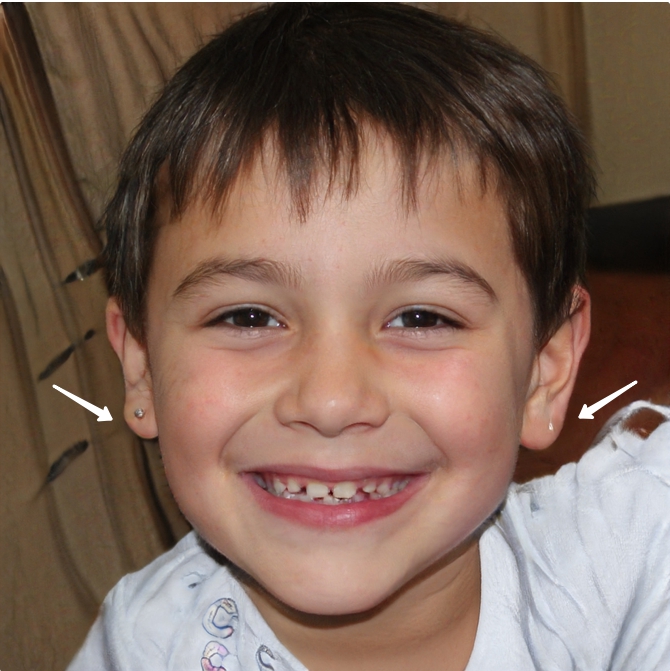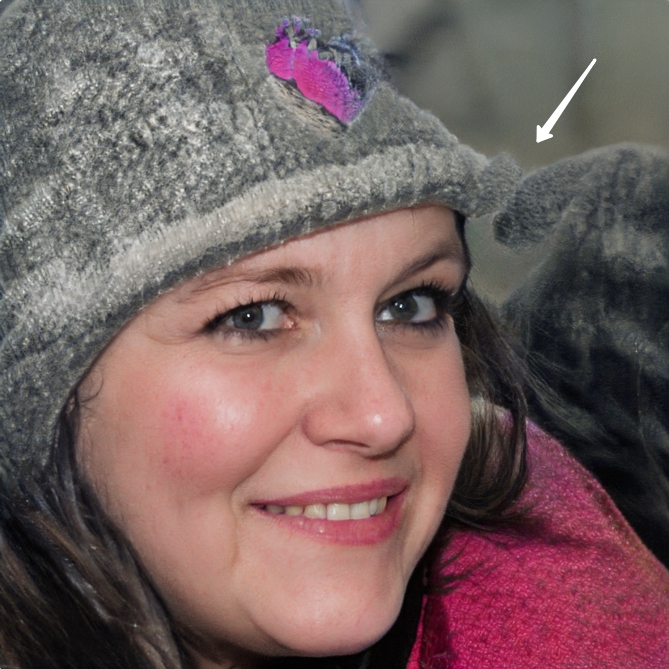-
Like paranormal and time travel?
You are using an out of date browser. It may not display this or other websites correctly.
You should upgrade or use an alternative browser.This person does not exist: A random photo-realistic face generator
- Thread starter Num7
- Start date
Beholder
Senior Member
They should have used wide angle photos in the training sets, so that the result can be cropped after performing face detection on the whole faces. This would produce correct kernels in the later layers.I was messing around a bit with the face generator and discovered something strange. (to me)
ThisPersonDoesNotExist - Random AI Generated Photos of Fake Persons
Generate random human face in 1 click and download it! AI generated fake person photos: man, woman or child.this-person-does-not-exist.com
When you go there...try this,
use something to point to the 'Person's ' eye to the right of the screen.
I found that each and every time I chose a different image, the eye was ALWAYS
in the same place....every time...for every image.
Not a glitch Imo,
but a reference point that was programmed into the software and
I have also noticed that some of the pictures seem to use an amalgamation of the human
face by (possibly) taking bits from other (perhaps actual?) faces to create or generate
the next face.
Have you noticed that at times...The ears don't match.....Differing facial features from left side to right side
besides what are obvious glitches such as the last 2 I posted.
Try looking for it.
 Ears no matching......
Ears no matching......

How to recognize an image of a fake person

It is almost impossible to recognise an image of a fake person. AI is so developed that 90% of fakes are not recognized by an ordinary person and 50% are not recognized by an experienced photographer. There are no services for recognition. Occasionally, a neural network makes mistakes, which is why artifacts appear: an incorrectly bent pattern, a strange hair color, and so on.
The only thing you need to do is take a closer look: humans’ visual processing systems are far stronger than computers’, so it is possible to recognise forgery by detection.
Jevin West and Carl Bergstrom created a website called “Which Face Is Real”, which is focused on teaching people to be more analytical of potentially false portraits. Before making suggestions that a person in a photo is existent, there are several things that need to be considered.
One of the most common ones is symmetrical issues, in particular eyeglasses and earrings.

Same uneven issues with teeth are quite common too. Look for odd characteristics like pixels and repeated incisors. Fake hair, in general, may seem with some glow around it or look too straight and streaked, again, with visible asymmetry.
Study background carefully. If it’s fake, it may include unusual distortions in shapes and lines, or have a torn appearance overall. Bleed-through occurs in bright colors that stand out from the background onto a fake person’s head.
Another distinguishing feature of the NVIDIA “StyleGAN algorithm” is glossy “water splotches”.
Could they be false teef Paula?I did notice the teeth aren't centered very well and they are all perfect.
 Could they be false teef Paula?
Could they be false teef Paula?

I certainly hope so. I'd be worried if it used real teeth.
Is that a photo of you Paula, taken a few years ago?I used this AI photo on Twitter and now get all kinds of likes and replies. I proved that one has to be beautiful to get attention on social media. It's a double standard. The men don't have to be attractive but the women must be or they are ignored. I just softened the focus a bit.
View attachment 14811
-
This site uses cookies to help personalise content, tailor your experience and to keep you logged in if you register.
By continuing to use this site, you are consenting to our use of cookies.



